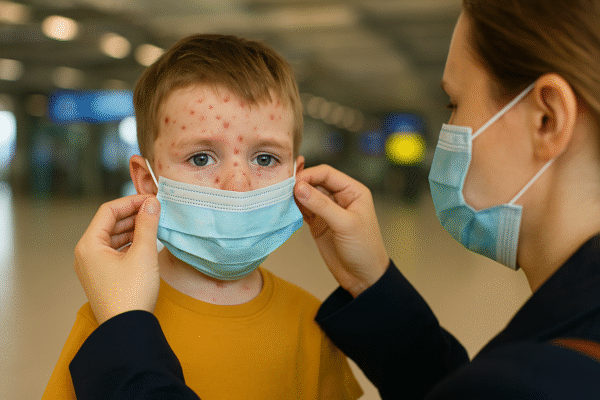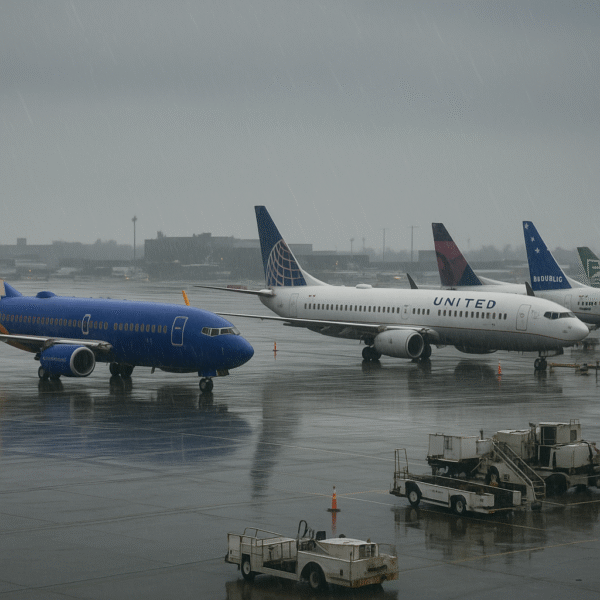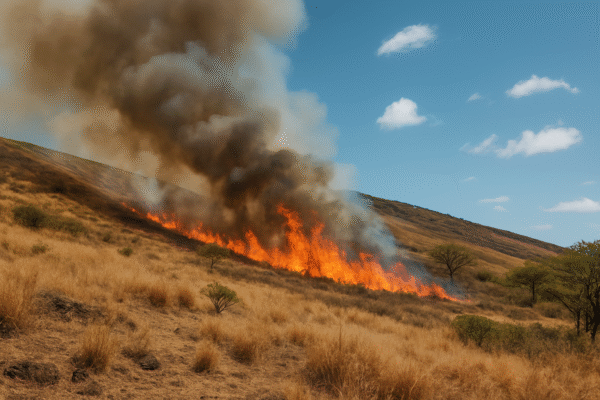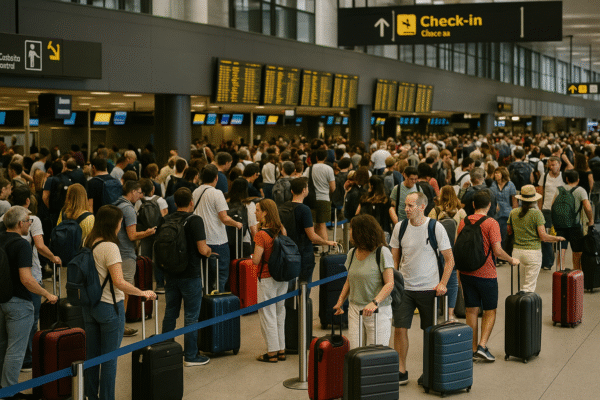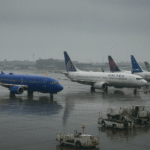The Hawaiian Islands are facing an intensifying wildfire threat this week as tropical storms sweep through the central Pacific, bringing powerful trade winds and compounding already dire drought conditions. Authorities have issued a high-alert travel advisory for Maui, Big Island, Molokai, and Honolulu, warning residents and tourists alike to brace for potential evacuations, disrupted flights, and hazardous air quality.
According to the National Weather Service and data from Hawaii Emergency Management Agency (HI-EMA), the state is now grappling with a dangerous combination of extreme weather and prolonged drought—conditions that experts say create an ideal environment for fast-spreading wildfires.
Tropical Storms Drive Wild Winds and Fire Conditions
The brewing tropical system, currently developing just south of Hawaii, is expected to strengthen trade winds across the islands. Working in conjunction with a high-pressure system to the north, these winds could reach speeds of 30 to 40 mph in some regions, significantly elevating fire risks. AccuWeather’s Lead Hurricane Expert, Alex DaSilva, noted that the gusty conditions may begin as early as Tuesday and persist into the weekend.
With over 50% of Hawaii classified as being in moderate to severe drought by the U.S. Drought Monitor, the concern is especially acute in the Big Island, Maui, and Molokai. The northern tip of the Big Island is already experiencing “extreme drought” levels, where dry grass and vegetation could easily ignite under wind-driven sparks or heat sources.
Downslope Winds and Hawaii’s Terrain Compound Risk
Hawaii’s unique geography further aggravates the situation. Downslope winds—where air descends from higher elevations and becomes hotter and drier—are expected to accelerate over the western and southern slopes of the islands’ volcanic mountains. These conditions drastically increase the likelihood of ignition and the rapid spread of fires, especially in residential and tourist-heavy zones.
The State of Hawaii Department of Land and Natural Resources (DLNR) has urged both locals and visitors to avoid open flames, postpone camping plans, and remain vigilant near forested and grassy areas. Firefighting units across the islands have been put on high alert, with additional resources deployed to high-risk areas.
A Stark Reminder: 2023 Maui Wildfires Still Loom Large
The current alerts evoke painful memories of the catastrophic 2023 wildfires that devastated parts of Maui, including the historic town of Lahaina. That disaster caused an estimated $15 billion in economic losses and severely disrupted Hawaii’s tourism-dependent economy. Officials now fear a repeat, especially with weather forecasts echoing the same conditions that contributed to the 2023 tragedy—high winds, prolonged drought, and low humidity.
Despite significant recovery efforts, many communities in West Maui are still rebuilding. The threat of another wildfire surge adds a heavy emotional and logistical burden to residents still healing from prior losses.
Impact on Hawaii Tourism: Disruptions, Cancellations, and Caution
The wildfire threat arrives at a peak summer travel season, posing a serious challenge to Hawaii’s tourism industry. Travel experts anticipate disruptions to flights at Kahului Airport (OGG), Kona International Airport (KOA), and Daniel K. Inouye International Airport (HNL). Airlines including Hawaiian Airlines and Southwest have begun offering flexible rebooking options for travelers potentially affected by the fire alerts.
Local tourism boards, including the Hawaii Tourism Authority (HTA), are advising all travelers to monitor weather updates, follow evacuation orders if issued, and consider postponing non-essential travel to high-risk areas. Popular outdoor activities like hiking, snorkeling, and sightseeing on scenic coastal routes may be suspended depending on fire conditions and air quality.
Second Tropical Threat on the Horizon
Adding further complexity to the crisis, meteorologists are tracking a second tropical disturbance that may develop into a storm system by late next week. If it materializes, this system could bring more wind and dry conditions to the islands, reinforcing the existing fire risk and further straining emergency resources.
Though rainfall might be a welcome relief for drought conditions, the trajectory of both tropical systems currently suggests limited precipitation. As a result, Hawaii remains dry and vulnerable.
What Travelers Should Do Now
Visitors with upcoming travel plans to Hawaii should:
- Regularly check updates from the National Weather Service and Hawaii Emergency Management Agency
- Subscribe to local emergency alerts
- Confirm flight and hotel bookings with flexibility options
- Avoid high-risk areas or trails, especially in wildfire-prone regions
- Pack emergency essentials such as N95 masks, flashlights, and travel insurance documentation
For those already on the islands, follow local advisories and be prepared to evacuate if conditions worsen. Authorities stress that wildfire behavior can change rapidly due to wind direction and terrain.
Resilience and Readiness Key to Recovery
While Hawaii’s beauty and culture remain irresistible to global travelers, the islands’ increasing vulnerability to climate-linked natural disasters is shifting the conversation about sustainable tourism and disaster preparedness.
State officials, including Governor Josh Green, continue to emphasize long-term investments in fire prevention, emergency response, and tourism crisis management. Meanwhile, residents and business owners are calling for greater awareness from visitors, hoping that tourists will approach their journeys with flexibility and respect for local challenges.
Final Thought: Safety First in Paradise
Hawaii remains a dream destination, but under current conditions, responsible tourism has never been more vital. With fire risks rising and emergency teams stretched thin, travelers are encouraged to prioritize safety, stay informed, and remain adaptable. As this season unfolds, Hawaii’s strength lies in its community’s resilience—and the understanding of those who come to share in its beauty.
For more travel news like this, keep reading Global Travel Wire




